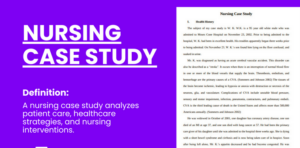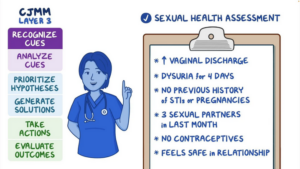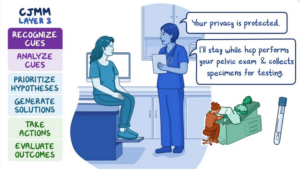Case Study- Adolescent white male without health insurance seeking medical care for STI
 The selected patient is a teenage white male who is seeking medical care for a sexually transmitted infection (STI). When dealing with this patient, it’s vital to approach them with care and empathy, considering the sensitive and potentially embarrassing nature of the issue.
The selected patient is a teenage white male who is seeking medical care for a sexually transmitted infection (STI). When dealing with this patient, it’s vital to approach them with care and empathy, considering the sensitive and potentially embarrassing nature of the issue.
To communicate effectively, it’s important to establish a connection by introducing myself as the nursing practitioner (Price, 2017). Given the patient’s potential anxiety, it’s crucial to use language that they can understand to alleviate their fears and anxieties.
Since the patient might have limitations in communication, questions can also be directed towards their caregiver. As a healthcare provider, I need to inquire about specific aspects of the patient’s life, including their sexuality, gender identity, housing situation, access to healthcare, and insurance coverage, to obtain a comprehensive understanding of their health (Fagundes et al., 2022).
During the patient interview, I would initiate the conversation with an introduction and a handshake, first with the patient and then with their guardian if present (Price, 2017). This approach is aimed at conveying that the adolescent patient is being given individual attention and treated with importance. When gathering the patient’s medical history through conversation, it’s important to adapt the approach based on the individual’s age, gender, race/ethnicity, and cultural background.

Struggling to meet your deadline?
Get your assignment on Case Study- Adolescent white male without health insurance seeking medical care for STI done by certified MDs and PhDs in the USA. ORDER NOW!
In this case, as the patient is a teenage male seeking care for an STI, it’s essential to create a private and comfortable environment for discussing sensitive topics (Ball et al., 2021). Age-appropriate language should be used when discussing sexual health, and any potential cultural or language barriers that could affect communication should be considered.
To extract the most useful information, I need to ask targeted questions about the patient’s social determinants of health. For instance, inquiring about the patient’s sexual orientation and gender identity is important, as these factors can influence the patient’s risk for STIs (Ball et al., 2021, p. 47).
Additionally, questions about the patient’s living situation, access to healthcare, and insurance coverage are crucial (Christian, 2022). Tailoring questions based on social determinants of health is essential for providing comprehensive and equitable healthcare. By considering these factors, as a healthcare provider, I can gain a better understanding of the patient’s unique situation and offer more personalized care (Price, 2017).
To assess the patient’s risk for STIs, various risk assessment instruments can be considered. In this scenario, the Sexual Health History Questionnaire (SHHQ) may be used to evaluate the patient’s sexual risk behaviors (Ball et al., 2021). In addition to the SHHQ, the CDC screening recommendations for sexually active adolescents and young adults, based on their sexual behaviors and demographic factors, can be employed to further evaluate the patient’s risk for STIs (Fagundes et al., 2022).
It’s essential to be aware of the potential health-related risks in this case. The patient being a young man faces a higher risk for STIs compared to adults due to insufficient sexual education and low condom usage (Ball et al., 2021). Moreover, the lack of health insurance might lead to delays in seeking medical care and potentially more severe health consequences. As a healthcare provider, it’s important to offer guidance on safe sex practices and provide information about affordable or free healthcare options available in the community (Price, 2017).
To ensure effective communication, it’s advisable to begin by identifying the patient’s communication preferences, which may include their preferred language, educational level, developmental status, and personal comfort level. Based on the SHHQ, the following targeted questions can be asked to assess the patient’s sexual risk behaviors:



